JAKE SPICER ON DRAWING HOCKNEY
Posted by Jake Spicer on 19th Jul 2023
Earlier this summer I was delighted to be asked to undertake a very special commission for Cass Art – drawing portraits of some of the most celebrated customers who have visited the Charing Cross store over its 125-year history as an art shop. The launch of the portrait series as a window display and the cover of a limited-edition Pith Sketchbook series also coincided with the reopening of the National Portrait Gallery after a three-year refurbishment. We decided that the commissions should be in a variety of media (charcoal pencil, ink and coloured pencil) and I dually set to work revisiting some of my own favourite portraits in my sketchbook and gathering reference material for the historical and contemporary artists who were to feature in the display.
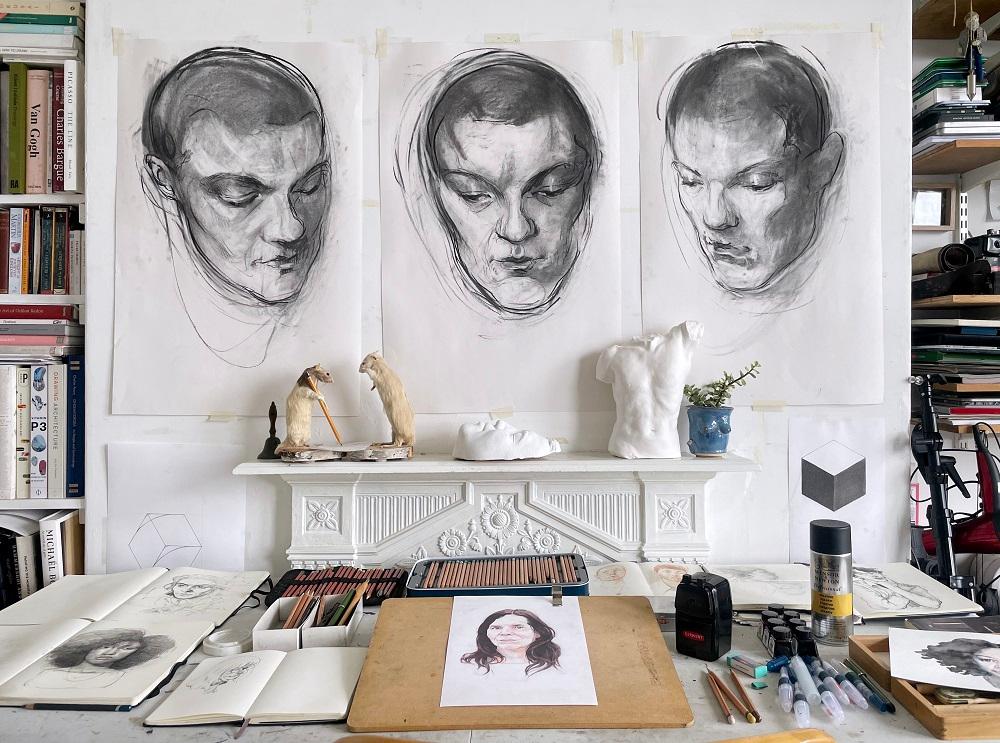
To give you an insight into how the coloured pencil drawings were made I took some photos of the stages of the drawing of David Hockney. While Mr. Hockney wasn’t available to sit for the portrait (I’ll be honest, I didn’t ask…) I didn’t want my portrait to simply be a copy of a press photograph, so I gathered a range of reference images of his face and outfits and combined plausible elements together on photoshop as a starting point for the drawing. Before starting the portrait, I also selected my palette of coloured pencils - true to form I used Derwent Procolour pencils for the underdrawing and Derwent lightfast for the later layers.
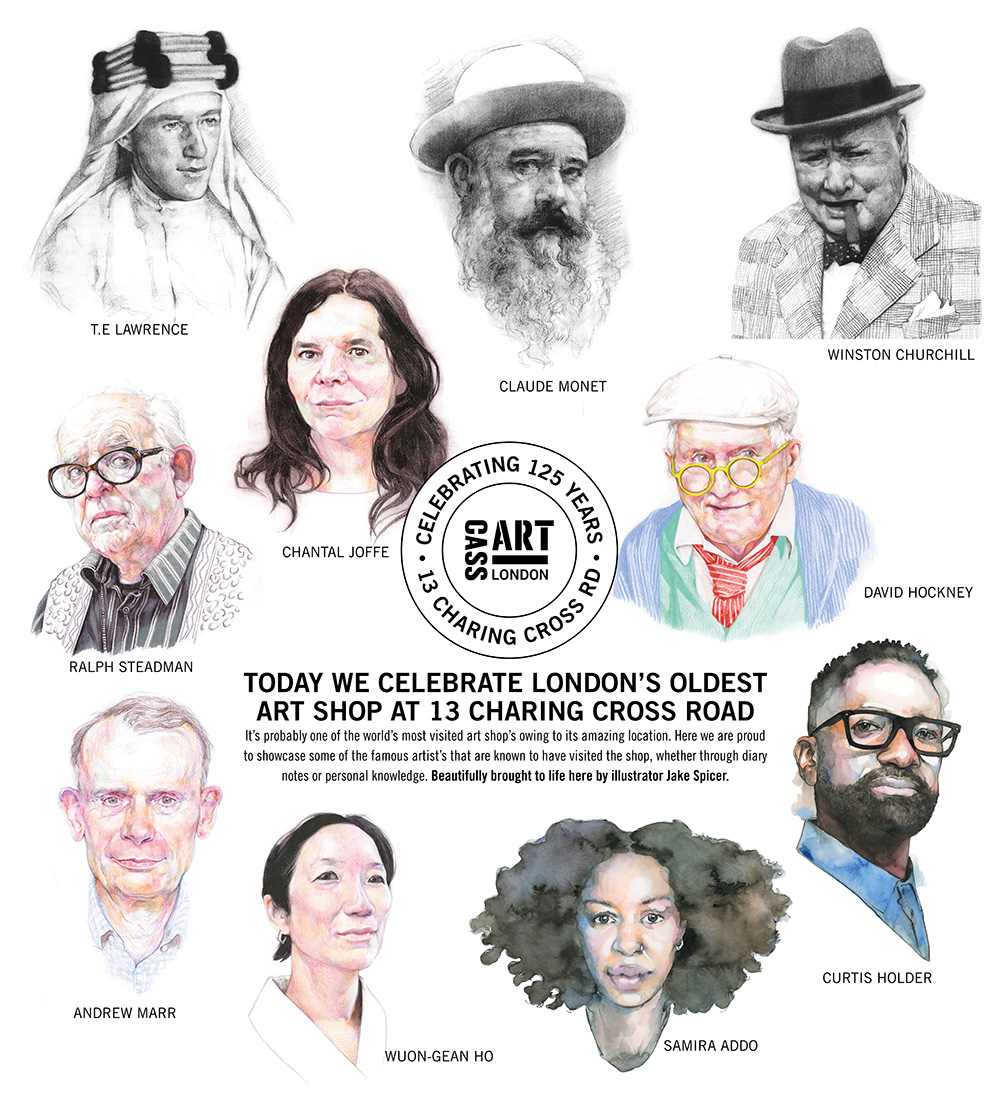
If you struggle to see a range of colours in a subject then the stage of selecting your pencils will be important – by picking a rainbow of different colours from your pencil tin you’ll train your eye tosee those hues in the subject.While pinks and browns have an understandably prominent showing in the blush of the cheeks and lips, greens and blues provide an important counterpoint to their warmth, showing in blood vessels, chin stubble or around the eyes. Yellows add a glow to the raised forms of the face and lilacs add chroma to its shadows. As you select each colour from your pencil tin your eye will work harder to match the colour in your hand with colours in the face of your sitter, making it easier to see a variety of hues than if you had picked out a single fleshtone pencil. Here’s how I went about making my drawing of David Hockney:
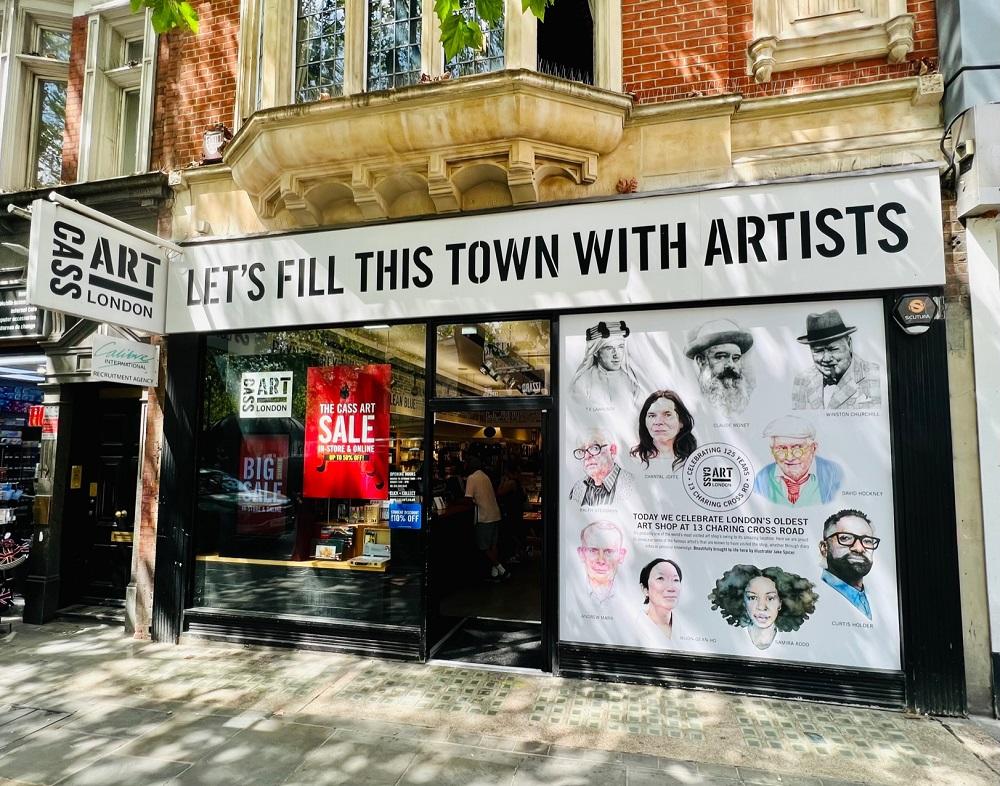
Stage 1: A line drawing
I began the drawing in a coloured pencil that can be erased, using a colour that was both pale enough not to overwhelm later marks and dark enough that it can be clearly seen on the paper. I chose Spectrum Blue pencil from the Derwent Procolourrange as it is easy to rub out and sits happily beneath the Lightfast pencils that will make up successive layers.
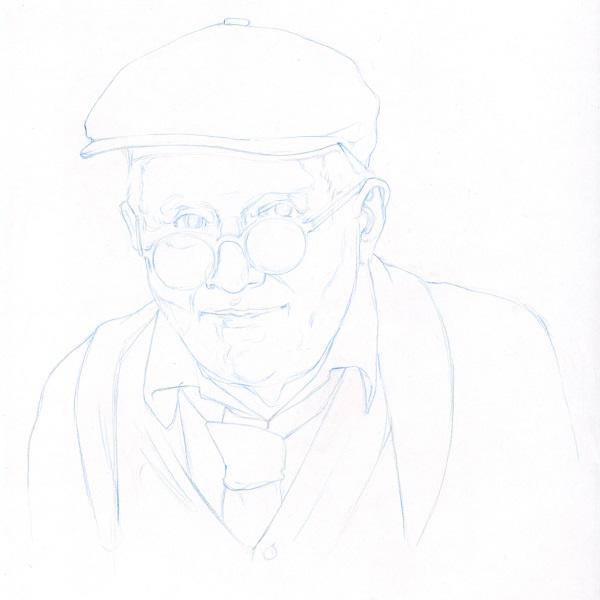
Step 2: Cool skin
Next came the cooler colours. As the warmth of flesh is self-evident and lilacs, greens and blues in skin are more difficult to see it is helpful to establish the presence of cooler colours early, lightly establishing tonal shapes in pale blues and purples in Derwent Lightfast to ensure the longevity of the drawing.
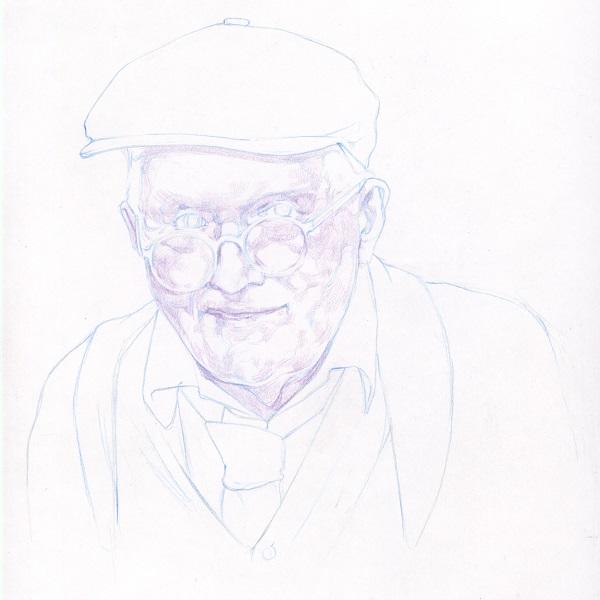
Step 3: Warm skin colours
Warm colours bring a blush of life into the cheeks and in this stageI picked out the red and orange around eyes, nose, mouth and ears and sculpting the face with marks that follows the surface of skin. I selected a red, orange and yellow to layer over and around the earlier purple.
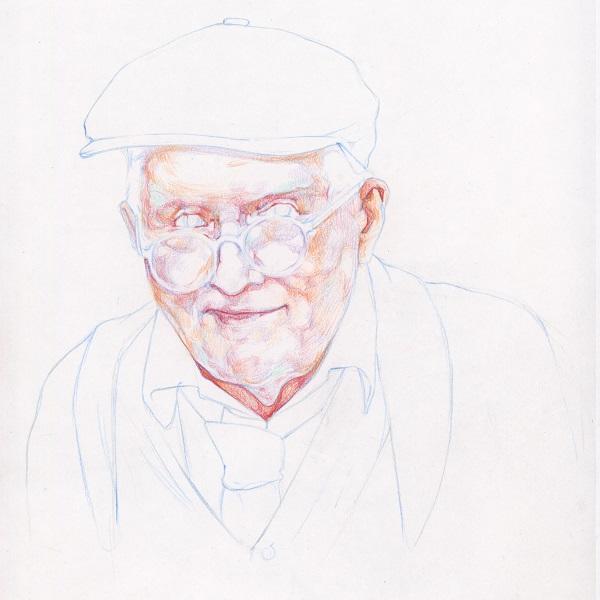
Step 4: Darks
Next the darker colours came into play – a brown and a dark blue with the red applied back over the top to ensure coke warmth in some shadows. I saved my heavier pressure of mark for this later stage once I was confident of where those marks should be placed to create some strong contrasts in the face.
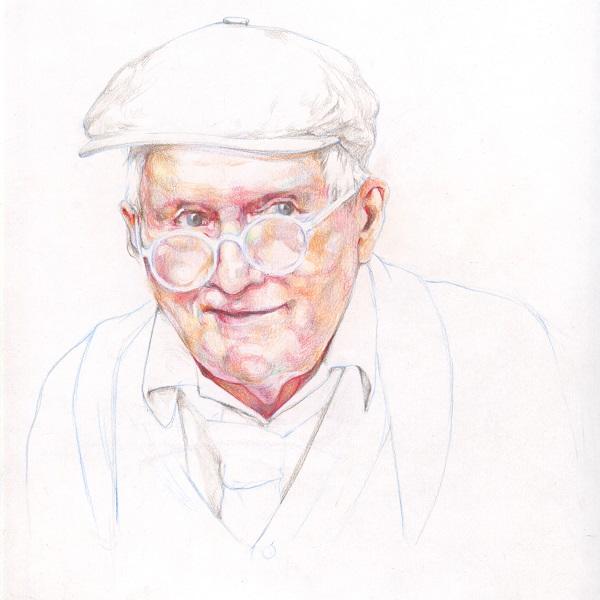
Step 5: Clothing
Finally came a fun stage – adding colour to clothes. To emphasise the colour contrasts in Hockney’s excellent outfits sense I chose one colour for each item of clothing, using the pressure and density of my mark to create tonal variation without trying to replicate the full tonal range of the folds. It was particularly satisfying to use a blunt blue pencil to directly follow the strips of his sky blue cardigan.
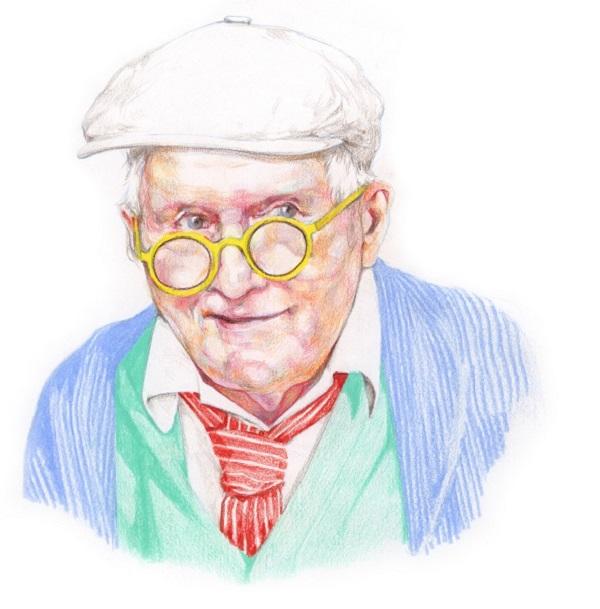
Jake Spicer is an artist, Cass Art Ambassador, and head tutor of the independent drawing school Draw Brighton. His best-selling book You Will be able to Draw Faces By the End of this Book is available both in-store and online.
Find more of Jake’s work at www.jakespicerart.co.uk or follow him @jakespicerarton Instagram.



